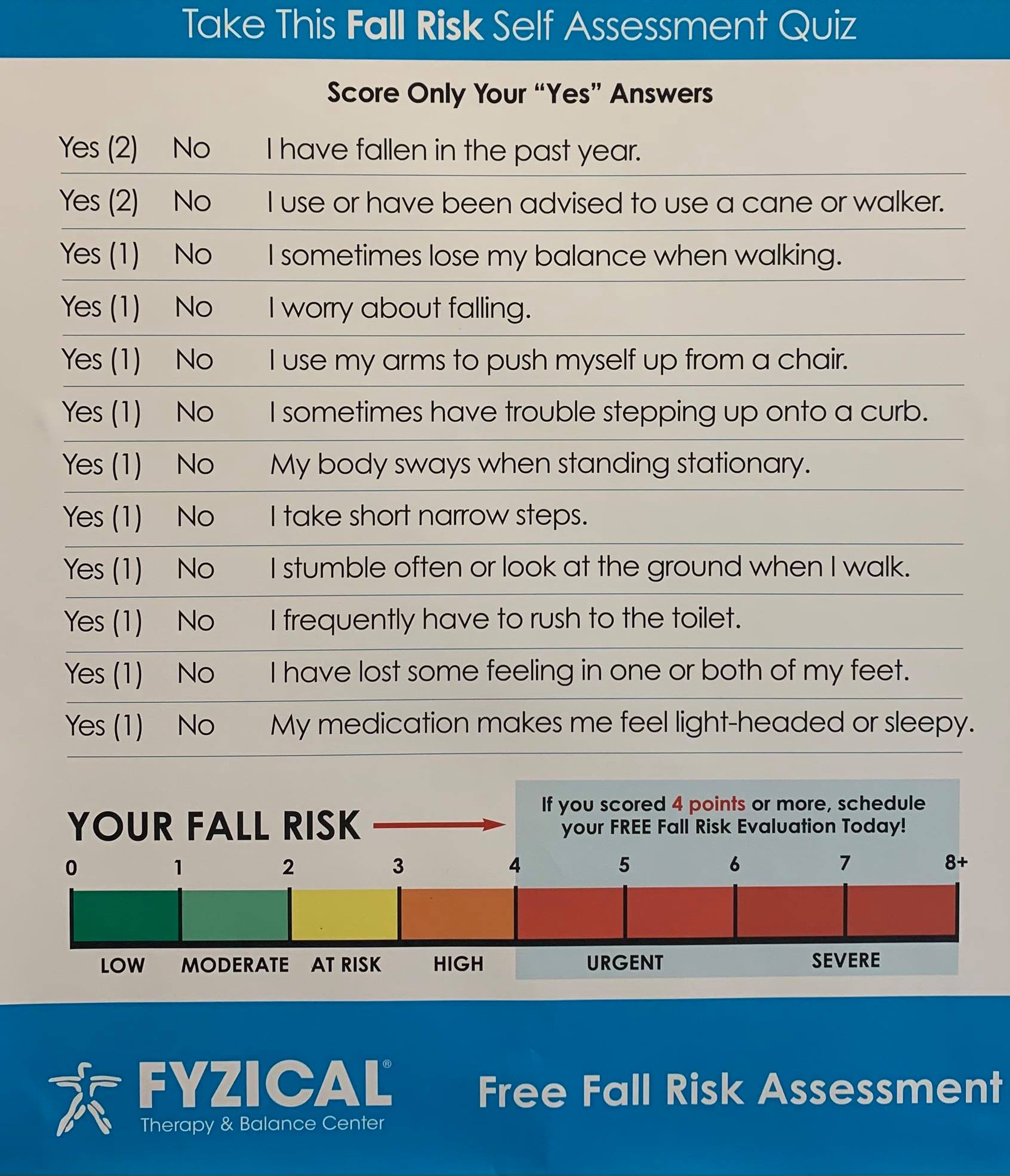What Does Dementia Fall Risk Do?
Table of Contents5 Simple Techniques For Dementia Fall RiskDementia Fall Risk Fundamentals Explained9 Easy Facts About Dementia Fall Risk ExplainedDementia Fall Risk for BeginnersThe Definitive Guide to Dementia Fall Risk
Nevertheless, based on indications and signs, such as proof of head injury or a brand-new focal neurologic deficiency, computed tomography or MRI of the mind might be shown - Dementia Fall Risk. An assessment for reasons of syncope must be carried out only if there is solid suspicion, as when it comes to frequent, inexplicable falls
Doctor utilize an autumn risk analysis to identify your risk variables for dropping and make useful referrals. Some people attempt to reduce their loss risk by limiting their activity or making every effort to be much more mindful. These sympathetic actions aren't enough - Dementia Fall Risk. An autumn threat evaluation is very important since understanding which variables raise your chances of falling assists you: Reduce your risk of dropping or harming yourself.
All adults 65 years and older ought to have a first fall threat testing. Have actually dropped in the past year. Worry about dropping.
Dementia Fall Risk Fundamentals Explained

, and goals specifically customized to patients that are at danger for falls. A is defined as an occasion that results in a person coming to rest inadvertently on the ground or flooring or other reduced level (WHO, 2021).
According to the Centers for Disease Control and Avoidance (CDC),, triggering over 34,000 deaths for that age. Falling is the 2nd leading cause of fatality from unintentional injuries globally. Death from drops is a severe and native issue amongst older people. It is estimated that autumn fatality rates in the U.S

Each year, over 800,000 people are hospitalized due to the fact that of drops. Registered nurses play a major function in stopping drops for their individuals through education, examining autumn danger, producing more secure atmospheres, and supplying interventions in protecting against injuries from drops.
Falls are due to a number of aspects, and an all natural technique to the private and atmosphere is important. Suppose a person is taken into consideration at high risk for drops after the testing.
Some Known Facts About Dementia Fall Risk.
A needs using a verified tool that scientists have examined to be helpful in naming the causes of falls in a person. The level of loss risk can be figured out using the evaluation of innate and external aspects.
People are more probable to fall again official site if they have actually sustained several falls in the past six months. The older populace goes to increased risk of fall-related readmissions based upon a research identifying the factors predictive of repeat falls linked results (Prabhakaran et al., 2020). Individuals with damaged recognition and disorientation might not comprehend where they are or what to do to more information assist themselves.
The capacity of people to shield themselves from falls is influenced by such aspects as age and development. Older people with weak muscular tissues are much more likely to fall than those that maintain muscle mass strength, versatility, and endurance.
The 3-Minute Rule for Dementia Fall Risk
Less contrast level of sensitivity was fairly connected with both increased rates of falls and various other injuries, while lowered visual acuity was only connected with boosted loss rate (Wood et al., 2011). Sensory perception of environmental stimuli is paramount to security. Vision and hearing disability restriction the individual's capacity to perceive hazards in the surroundings.
Older adults who have bad balance or problem walking are most likely to fall. These issues may be related to absence of exercise informative post or a neurological cause, arthritis, or various other clinical conditions and treatments. An important threat element highlighted in a study is that adults with rheumatoid arthritis are at high risk of drops, including inflamed and tender lower extremity joints, fatigue, and use of psychotropic medications (Stanmore et al., 2013).